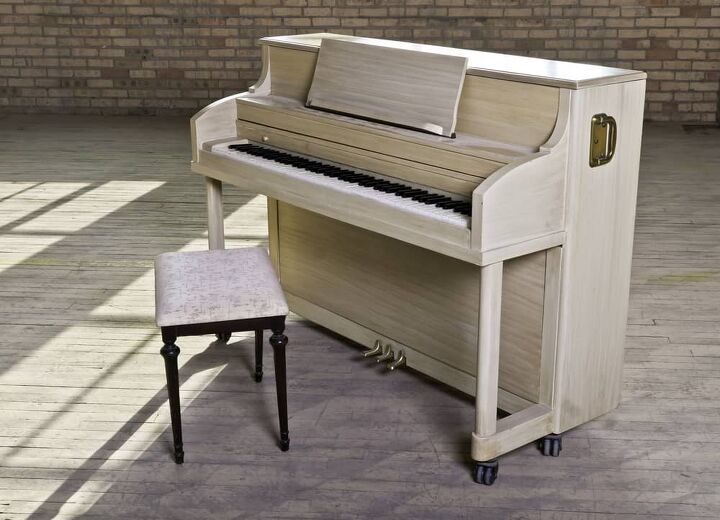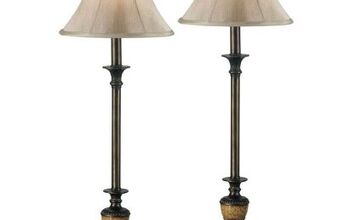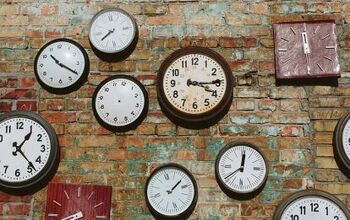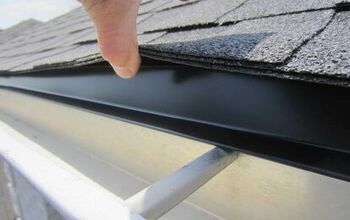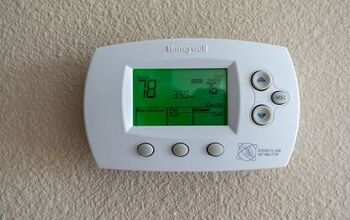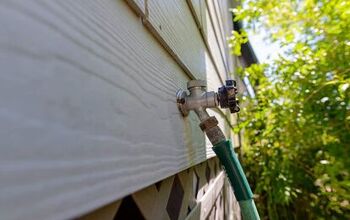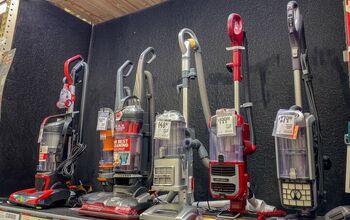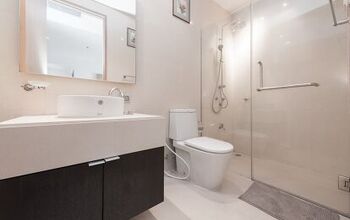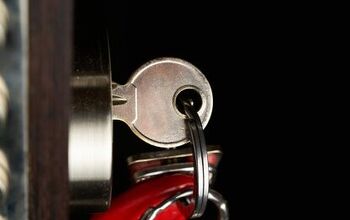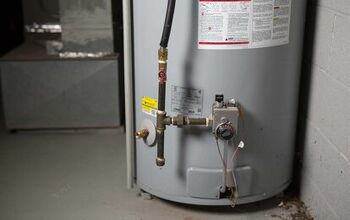9 Different Types of Pianos (with Photos)

If there is one thing that turns a living room into an elegant place to hang out, it’s having a musical instrument on display. While you could say guitars and saxophones can offer some class, nothing quite does it like having a piano. If you’re in the market for a piano, you should be aware of what types they are, how they’ll fit in your home, as well as the musical quirks they have.
There are several different types of pianos that you can find on the market. These include:
- Spinet
- Console
- Studio
- Standard Upright
- Digital
- Baby Grand
- Medium Grand
- Grand
- Concert Grand
Getting the right piano for your home isn’t just about getting good sound. It’s also about having the right look for your home and knowing what to expect. This guide will give you a better idea of what each piano will offer, how much it may cost, and more.
The Different Types Of Pianos
Buying a piano is a lot like buying a car. You need to do your research, and you need to know what your options are. Take a look at each of our subsections below to find the piano of your dreams.
Note: For the price points listed, we took a look at common retail prices for entryway models that are brand new. It’s possible to find them cheaper, if you are open to fixing and refurbishing them. Pianos can cost as much as $1 million, so be prepared for a sticker shock as we get to more status-symbol types. Also, we don’t consider synthesizer keyboards the same thing as digital pianos.
Spinet
Spinet pianos are the smallest upright pianos on the market that have a traditional build. In other words, short of going fully digital, you’re not going to find a set of keys smaller than this. Most spinets are fairly basic in design and have a Western look to them that makes them great for country living rooms. In most cases, they are only found in antiques.
These pianos range between 36 inches to 40 inches in height and aren’t meant for concert use. They’re starter pianos through and through. It’s because their sound doesn’t have a very good range. Due to the fact that their sound is less than ideal, most companies have discontinued their manufacturing and sale. This makes them more of an interior design addition than a legit musical instrument.
- Price: $300 to $5,500
- Height: 36 to 40 inches
- Main Category: Upright
Console
Console pianos are basically grown-up spinet pianos. They’re slightly larger in both height and width. This gives them a better overall sound quality and also offers players the ability to practice with a better eye on quality. Like spinets, these have a slight tendency to be on the plainer side of things. Many musicians also consider them to be better for practice than it is for performance.
One thing that you might be surprised to hear is that there are several different style choices you can choose from. Some, like the manufacturers of this piano above, go for the country-western look. Others go for a sleeker, more modern look. Even more, go for the “bare bones” look of a spinet. So if you are looking for a contemporary option that you can always work with, this is it.
A typical console piano will be between 40 to 44 inches. Because they have a stately look, you can also use them as an elegant furniture option.
- Price: $2,200 to $6,000 or more
- Height: 40 to 44 inches
- Main Category: Upright
Studio
Now, we’re getting to the point of seeing pianos that have a serious musical value. Studio pianos are the best traditional upright pianos for people who want to throw concerts in their homes. As the name suggests, these have recording studio-quality sound, which is why people who are audiophiles prefer them. If you have a church piano at your place of worship, it’s probably one of these. They can get loud!
Studio pianos are a bragging right across the board. This is actually why most studio pianos have an elegant, ornamental look to them. They sound great, they look great, and they’re pretty big, too. These can be done in a classic upright look or a cabinet look. They are just underneath four feet tall.
- Price: $2,200 to $6,000 or more
- Height: 45 to 47 inches
- Main Category: Upright
Standard Upright
This might be a little confusing at first, because we’ve basically mentioned a bunch of pianos that are upright in position. Technically, all of them fall into the upright piano category. However, a standard upright piano is a specific type of upright piano. These are the largest upright pianos on the market, towering at 48 inches or more in height.
Because they’re so large, they tend to have a powerful type of sound to them. They are easy to tune and maintain and typically have concert-quality sound. As a result, they are a commonplace instrument in the homes of professional pianists as well as major audiophiles. While they can be hard to move from room to room, they are a great choice for a permanent fixture. (They also can have wheels!)
This is the gold standard of upright pianos. You will love having one, especially with their stylish veneers. However, you are going to see a very high price tag for a new entry-level standard upright.
- Price: $4,500 to upwards of $25,000
- Height: 48 inches
- Main Category: Upright
Baby Grand Piano
Baby grand pianos are the smallest horizontal/grand pianos that are on the market, and they are both a furniture statement as well as a major musical investment. These pianos can be anywhere from 54 to 63 inches in length, making them a fairly large piece of furniture that’s destined to grab attention.
All grand pianos are considered to be concert-worthy, so if you’re an audiophile, you will not have to worry about the quality of the sound from a baby grand. However, smaller grand pianos can have a sound that’s similar to a studio upright or a standard upright due to the size of their soundboards. So if audio is your number one issue, stick to an upright.
Regardless, owning a baby grand is a major status symbol and a great addition to any high-class home. Nothing says sophistication like a baby grand in the living room.
- Price: $4,500 to upwards of $100,000
- Height: 54 to 63 inches
- Main Category: Grand
Medium Grand Piano
Medium grand pianos are almost exactly like a baby grand or a grand piano. The difference is in the sizing. A medium grand piano is meant to be between 65 to 75 inches in length. This makes them a fairly large addition to any home, which is why they are almost always found exclusively in mansions, concert halls, or music schools.
Unlike baby grand, medium grand pianos do not have any issues with the size of their soundboard. They have a long length and tend to have enough space to truly get booming vibrations. This makes them better than any upright piano that you could find on the market. Saying that they are concert-worthy is fair.
With these, you will need a wide berth. Even so, you will love what you see!
- Price: $6,500 to upwards of $100,000
- Height: 65 to 75 inches
- Main Category: Grand
Grand Piano
A grand piano is a status symbol among status symbols. Known as the largest “home-sized” pianos, grand pianos are famous for having excellent sound quality, a romantic-yet-traditional look, and for being the type of thing people dream about having. They exude wealth and are heirloom items to the core. Inheriting an antique baby grand is a major bragging right, as these never lose value.
If you are looking for ultra-high quality sound from your piano, a grand piano is exceptionally hard to beat. Many upscale concert halls and entertainment venues have them as fixtures specifically for professional musicians. In fact, we even hear that Billy Joel has grand piano of his own in his favorite room in his home.
These pianos as massive, and can run anywhere from 78 to 88 inches. If you want to have a full grand piano, make sure you have plenty of space for it. Moreover, you might need help figuring out how to get the piano in your home in the first place!
- Price: $6,500 to upwards of $100,000
- Height: 78 to 88 inches
- Main Category: Grand
Concert Grand Piano
Now, we’re getting to the point where you won’t see these types of pianos in the vast majority of homes, even if you’re visiting the home of a super-wealthy person. These are the largest pianos on the market, and they usually start at 90 inches, and only go up from there. Along with being extremely long, they tend to have the loudest volumes due to the echos they make.
Saying that the sound quality on these is good is an understatement. They’re not the gold standard of pianos. They’re the platinum standard and go above and beyond what most people would want to ever consider adding to their home. If you’re a super-serious musician who makes a living off your piano skills, then you might consider getting one of these.
With that said, this is often overkill for most people. A regular grand piano is totally fine.
- Price: $100,000 to upwards of $190,000
- Height: 90 to 112 inches
- Main Category: Grand
Digital Pianos
Digital pianos are a little bit hard to categorize when it comes to their forms, simply because they can be made in so many different shapes and sizes. They can have an appearance like a grand piano or they could be as small as a spinet. Some can even be smaller. The big trait that ties them all together is that they are digital. There are no hammers, piano strings, or other “natural” features on these instruments.
One thing that you need to be aware of is that digital pianos are NOT the same thing as synthesizers. Synthesizers can sound like pianos, but really get their rep for having a wide range of sounds. Synths or “keyboards” have less than the typical 88 keys, and also don’t have the same weight that digital piano keys have. It’s a starkly different experience playing on the two.
Admittedly, many musicians can’t stand digital pianos. This is because it’s really hard to actually make the notes sound natural. Unlike regular pianos, digital pianos can’t do legato well because they don’t have the natural vibrations carrying them through. Low-quality models can also sound more like synthesizers than actual pianos. It’s best to use these as practice pianos, as a result.
The good news about them is that they can look remarkably good for their price point, so if you’re looking for a nice furniture addition, this is it. You also won’t be able to use these pianos for too long, so Thankfully, they’re all pretty cheap when compared to other pianos of their size.
- Price: Varies greatly, starts at around $500. Rarely over $15,000.
- Height: Varies greatly
- Main Category: Electronic
Should I Buy A New Piano?
Pianos are a somewhat unusual purchase when it comes to the “new versus used” debate. A new piano is always a good investment, especially if you want to get a piano that comes with a warranty or want to avoid having to do any repairs/tuning before you play. Having a new piano is always a great thing, really.
However, I’d be lying if I didn’t say that pianos can also be a remarkably good buy when used. This is especially true when you’re dealing with a piano that has been professionally refurbished. Since all pianos (aside from digital ones) tend to become coveted antiques as long as they’re maintained, you won’t have to worry about it losing value. It’s not a car!
When Does It Make Sense To Buy A Used Piano?
Honestly, most people tend to want to buy a used piano rather than go for a new one. It’s possible to find used Steinways that are somewhat affordable. The same cannot be said, however, about new ones. In most cases, used pianos are in fairly good condition and are playable as long as they get gentle tuning.
If you are looking to turn your piano into furniture, the age of an older piano becomes a major asset. People love the worn look of an old piano. And, if you choose to start playing, it’s always possible to refurbish it and turn it into a brand-new, playable instrument once more. So, if you ask us, most used pianos are a bargain.
When Does It Not Make Sense To Buy A Used Piano?
It’s very rare to hear of a situation where a new piano will trump a used one. However, there are still moments where it could be justified. These situations can include:
- You are super-wealthy and want all the amenities. If you are a multimillionaire with a love of pianos, get it new. Companies like Steinway make a point of having incredible customer service. You can bet that they’ll make buying a new one worth your money, if only because you’ll be waited on hand and foot.
- The piano in question is for a concert and you’re a club owner. Nightclub owners who want to add a piano to their place often need the service that comes with a new model plus a warranty. You’d be shocked at how rowdy some pianists get on those keys!
- You are a professional musician and have a home recording studio. If you expect to write and record a new album using the piano, you might as well go for new if you can afford it. Besides, you can write it off on your taxes as a business expense.
What Type Of Piano Should I Get?
It all depends on your priorities. We’re going to break it down by the reason you might want a piano, okay?
The Pro Musician/Audiophile
If you are a music fan (or artist) with some serious cash on the side, the best piano you should get is the one that plays the best for your budget. Sound is number one, after all. Musical instruments are an investment in your craft, so expect to pay more. With that said, any of the following types are a good choice:
- Studio
- Standard Upright
- Grand
- Middle Grand
- Concert
The Furniture Aficionado Who Still Wants Music
As someone who basically lives by their aesthetic, I totally understand the desire to have a musical piece that you have no idea how to play, simply because you admire its beauty. The good news is that this means you can cut corners when it comes to sound, which can be a major money eater. These often work best:
- Digital
- Spinet
- Baby Grand
- Grand
- Middle Grand
- Concert
The Music Student
Imagine this scenario: you’re a parent of a talented kiddo, and you want them to become the next Liberace. Or maybe, you’re a music major at your local college. You love music, you want to play, but you don’t have much of a budget. What can you do? Well, you still have a couple of options that can expand the musical knowledge you want…
- Digital
- Spinet
- Console
- Standard Upright
The Person Who Doesn’t Care About Music But Wants A Pretty Piano
Believe it or not, there are people out there who buy musical instruments they don’t really want to ever hear. If you don’t care about functionality at all, you might want to skip out on paying all that money for a piano that plays music. A cheaper alternative that still gives you the look you want is to buy a piano shell alone.
Piano shells are often far cheaper than a brand new piano and do not contain any of the hardware that a music instrument requires. It’s a good way to get the aesthetic you want without the price tag.
Why Are Pianos So Expensive?
A brand new piano can cost anywhere from $500 to well over a million dollars. It’s insane, right? If you’re wondering why pianos are so expensive, you’re not alone. There are several reasons why you’re feeling that pain in the wallet…
- A lot of workmanship goes into making a piano. Like most instruments, you can’t really make these without a lot of skill involved. Pianos are particularly famous for having to be handmade to get amazing quality. Finding a trained piano maker? Not easy. At all. As a result of the scarcity of good artisans, they tend to get paid top dollar. The labor alone accounts for a sizable amount of the price tag.
- Then, there’s also the wood that pianos are made of. The price of wood has been going up globally, regardless of the quality. Pianos can’t be made of plywood. Rather, they are made of hardwoods that are especially pricey, such as mahogany or teak. The price of the materials, therefore, adds more heft to the overall cost.
- It takes a lot of time to make a piano correctly. Along with having artisans that make it by hand, companies also have to pay for the artisan’s time. It can take months for a single piano to be made in some cases.
- They’re also an investment and an object d’art. Pianos don’t lose value. If anything, they stay stable or they gain it as the years pass. Companies know this and will price them accordingly. This is especially true if the company in question is one like Steinway, an internationally recognized brand.
- Pianos are status symbols. Most people wouldn’t care about Rolex watches if they weren’t $10,000 a piece. That’s part of their allure. The same can be said of pianos. Part of their hefty price comes from the fact that they are luxury items that are seen as status symbols. Being able to afford one is part of the “charm.”
Should You Get A Keyboard Instead?
Keyboards, also known as synthesizers, are very similar to a digital piano. In many cases, they’re one and the same. The truth is that many digital pianos are just keyboards that have been installed in a piano shell for a more “authentic” look. However, there is something to be said about the different connotations that each instrument has.
A keyboard tends to be a cheaper version of a digital piano, especially when it comes to the sound. (Sorry Yamaha!) However, they can offer decent sound and a wide array of different sound effects, too. If you are looking for a simple way to practice the piano on a very strict budget, then you should look into a keyboard.
Is Getting A Piano Worth It?
Getting a piano is worth it, but only in the right circumstances. If you are looking for a furniture item that adds a musical flair, then it could be a good investment as long as it will actually see some playing. People who are avid musicians or own a music studio will want to get one, simply because it’s a part of a business or a major staple of your hobby.
Of course, pianos aren’t exactly a smart choice for everyone. They are extremely difficult to move from place to place, and tend to run extremely large. If you want to play on a piano but are constantly moving around, it might be time to take a look at keyboards instead. Some of them can have pretty decent sound!
Related Questions
Are old pianos actually worth anything?
Whether or not an old piano is worth anything all depends on how well it’s maintained. A piano is a machine, after all. That means that its value mostly depends on how well they can play music. If they are left to rot, abandoned in a barn, there’s a good chance that the piano in question will be worth $500 or less.However, if the piano in question is well-maintained, the price can skyrocket. This is especially true if the piano in question has significant importance, such as a Model Z that John Lennon played. The best way to determine how much a piano is worth is to have it appraised.
What is a piano shell?
A piano shell is a faux piano. They are made from wood, plastic, or acrylic, and are meant to give people the appearance of a classical piano. Most people use them to give a place a prop piano. To actually make it musically viable, a digital piano or keyboard is dropped into the key area. The inside is totally hollow.These are increasingly popular because they are lightweight, more affordable, and easy to bring on the road. If you’re a traveling musician or a club owner, it makes sense.
Why do piano keys turn yellow?
While pianos are great, the truth is that they have a very unfortunate side effect. Exposure to light will turn all piano keys yellow over time. This is true regardless of whether it’s classic ivory or plastic. It’s an effect of oxidation as well as general exposure to grit.Thankfully, you can restore them using a white vinyl eraser. If you have plastic keys, you can also use a Mr. Clean Magic Eraser to do the trick.

Ossiana Tepfenhart is an expert writer, focusing on interior design and general home tips. Writing is her life, and it's what she does best. Her interests include art and real estate investments.
More by Ossiana Tepfenhart



